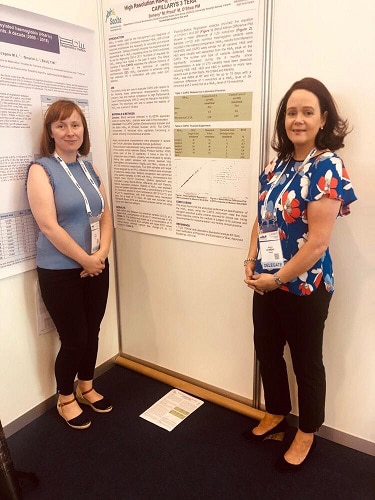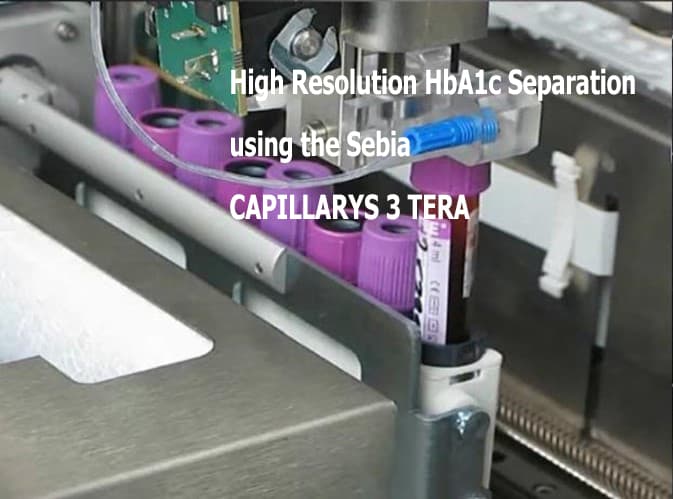HbA1c is widely used for the management and diagnosis of diabetes mellitus (DM). Correlation between HbA1c with clinical outcomes emphasises the necessity for accurate and precise measurement. Galway University Hospital (GUH) has experienced an exponential rise in HbA1c requesting since the WHO endorsed its use for diagnosis of DM in 2011. The number of requests for HbA1c testing has tripled in the past 6 years.
Maria Prout & Martina Doheny, with the support of Consultant Clinical Biochemist, Dr. Paula O’Shea from the Department of Clinical Biochemistry, GUH, carried out an extensive evaluation to validate & implement the CAPI3 for routine testing of HbA1c.
The Sebia Capillarys 3 Tera (CAPI3) uses capillary electrophoresis (CE) to separate the different fractions of haemoglobin. The primary study aim was to evaluate CAPI3 with respect to the following assay performance characteristics: linearity, precision, bias and method comparison to High Performance Liquid Chromatography (HPLC) using the Menarini HA-8160V analyser. The secondary aim was to assess the stability of HbA1c over a period of 15 days.

To find out more about the methods used and the results obtained please download their poster.


